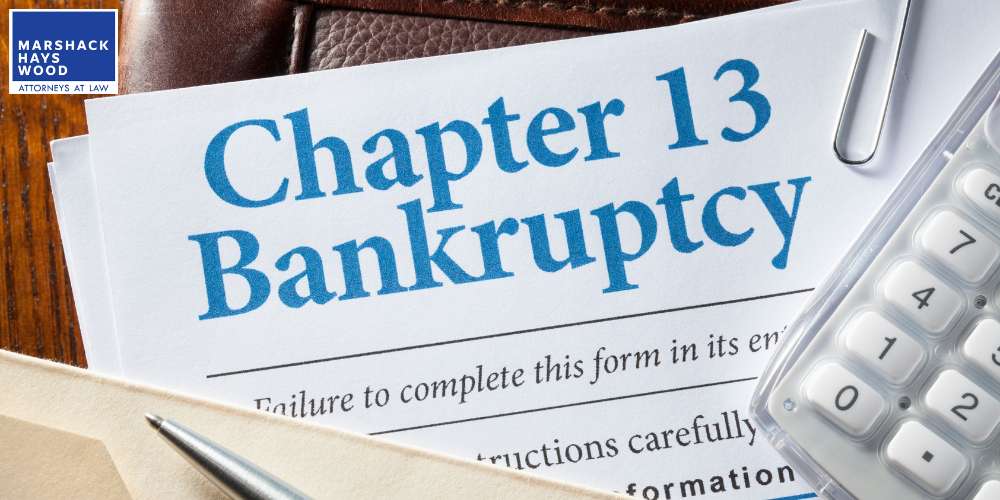Chapter 13 Bankruptcy Forms in California
Home » Practice Areas » Orange County Bankruptcy » Chapter 13 Bankruptcy » Chapter 13 Bankruptcy Forms
Practice Areas
Chapter 13 Bankruptcy Forms

Chapter 13 bankruptcy offers a vital lifeline to individuals grappling with overwhelming debt, providing a structured path toward financial stability. Central to initiating this process is the bankruptcy petition, a series of forms meticulously designed for individuals filing for Chapter 13 bankruptcy. These documents are pivotal in outlining a debtor’s financial landscape, including assets, liabilities, income, and expenditures, setting the stage for a proposed repayment plan.
Chapter 13 bankruptcy uniquely allows debtors to retain their assets while making manageable payments to creditors over a period, typically three to five years. By navigating the complexities of these forms and adhering to the structured payment plans, individuals can effectively address their bankruptcy issues, securing much-needed debt relief and a fresh financial start.
The experienced Chapter 13 bankruptcy attorneys at Marshack Hays Wood are here to guide you through every step of the process. Call (949) 333-7777 or contact us online today.
What is Chapter 13 Bankruptcy?
Chapter 13 bankruptcy, often referred to as a wage earner’s plan, enables debtors with regular income to develop a plan to repay all or part of their debts. Through this process, debtors undergo a means test to determine their eligibility, ensuring that their income is sufficient to cover their basic expenses while managing repayments.
Upon filing for Chapter 13 bankruptcy, a trustee is appointed to oversee the case, including distributing payments to creditors. This type of bankruptcy allows individuals to reorganize their financial obligations, potentially including credit card debt, without the immediate threat of losing their assets. Debtors propose a repayment plan to make installments to creditors over three to five years, offering a structured path to financial recovery while maintaining control over their finances.
How Do I Prepare for Chapter 13 Bankruptcy?
Preparing for Chapter 13 bankruptcy involves several critical steps to ensure a smooth process.
First, obtain a copy of your credit report from all major credit reporting agencies to ascertain all debts. Gathering comprehensive financial documents, including income statements, tax returns, and expense records, is essential to accurately assess your disposable income, which will play a crucial role in your repayment plan.
Familiarize yourself with the bankruptcy court requirements, including the filing fee and any mandatory pre-filing counseling.
Hiring an experienced bankruptcy attorney can significantly ease the bankruptcy process. Your attorney will guide you through each step, help prepare your petition, and ensure that your repayment plan meets legal standards and maximizes your financial recovery. These preparatory steps will position you for a more favorable outcome in your Chapter 13 bankruptcy filing.

What Forms Are Needed to File Chapter 13 Bankruptcy?
To file for Chapter 13 bankruptcy, several specific forms are required by law to accurately represent your financial situation and outline your strategy for managing debt.
First, you must complete the necessary paperwork to demonstrate you qualify for Chapter 13, including the means test calculation. Essential bankruptcy forms include your petition, schedules of assets and liabilities, a schedule of current income and expenditures, and a statement of financial affairs.
Additionally, you must submit a proposed repayment plan, detailing how you intend to address secured claims and unsecured debts throughout the payment period, typically three to five years.
These documents collectively provide the bankruptcy court with a comprehensive overview of your financial status, ensuring that your plan complies with legal requirements and demonstrates your commitment to resolving outstanding debts through structured payments.
Chapter 13 Plan Form
This document serves as the cornerstone of your Chapter 13 bankruptcy case, outlining the specific terms of how you propose to reorganize and pay back your debts over the payment period determined by the court.
It requires a detailed presentation of your financial affairs, including income sources, monthly living expenses, debts, and how these debts are prioritized and addressed within your repayment strategy. This plan is meticulously reviewed by the bankruptcy court and your creditors to ensure it is feasible and complies with the legal frameworks governing Chapter 13 bankruptcy.
Submitting a well-prepared and realistic Chapter 13 plan form is vital, as it sets the stage for managing your financial obligations and seeks to balance your need for relief with the interests of your creditors.

What are the Mandatory Chapter 13 Forms?
For individual debtors filing for Chapter 13 bankruptcy, several mandatory forms are required by the bankruptcy court. These essential bankruptcy forms include the petition for bankruptcy, schedules of assets and liabilities, a schedule of current income and expenditures, and a statement of financial affairs.
Additionally, debtors must submit a repayment plan outlining how debts will be handled throughout the bankruptcy process. Other documents may also be necessary, depending on the case’s specific circumstances, such as proof of credit counseling and any income documentation to support the filed schedules.
These forms provide a detailed overview of the debtor’s financial situation, ensuring the court has all the information needed to proceed with the bankruptcy case.
Voluntary Petition – Official Form 101
The Voluntary Petition – Official Form 101 is a document that serves as the official claim for bankruptcy relief, marking the debtor’s formal request to the local bankruptcy court to reorganize their debts under Chapter 13.
The form requires detailed information about the debtor’s identity, including their name, address, the type of debt (consumer or business), and an estimation of assets and liabilities. Importantly, Official Form 101 also asks the debtor to disclose any pending eviction judgments or unexpired leases, which can significantly impact the bankruptcy case.
Statement About Social Security Numbers – Official Form 121
The Statement About Your Social Security Numbers – Official Form 121 is designed to protect the debtor’s identity while ensuring the accuracy of the bankruptcy filings.
This form requires the debtor to provide their full Social Security number or Individual Taxpayer Identification Number, which is used by the bankruptcy trustee to verify the debtor’s identity, secure debts, and cross-reference the information provided in the individual debtor’s schedules. This document is submitted to the court along with other required bankruptcy forms but is not part of the public record, maintaining the confidentiality of sensitive personal information.
Application to Pay Filing Fee in Installments- Official Form 103A
The Application to Pay Filing Fee in Installments – Official Form 103A provides individuals with the opportunity to request permission from the bankruptcy court to pay the filing fee for their bankruptcy case in installments.
The form is particularly beneficial for debtors who cannot afford to pay the filing fee in one lump sum due to financial circumstances, such as having a separate household or making child support payments. By disclosing their current monthly income and expenses on this form, debtors can propose a reasonable and manageable plan to the court detailing how they intend to pay the filing fee over time.
Summary of Assets and Liabilities – Official Form 106
The Summary of Assets and Liabilities – Official Form 106 provides a comprehensive overview of the debtor’s financial situation, including detailed listings of assets and liabilities.
This form requires debtors to disclose information about their unsecured creditors, the status of any executory contracts, and any other pertinent financial obligations. The data compiled in this form and the following documents filed in the bankruptcy case play a pivotal role in determining how creditors will be paid.
Schedules A/B Through J – Official Forms 106 A/B – J
Schedules A/B through J – Official Forms 106 A/B – J are documents that require detailed information about the debtor’s assets and liabilities, income and expenditures, executory contracts, and unexpired leases, among other financial details.
Through these individual debtor’s schedules, the courts, the attorney, and creditors gain a comprehensive understanding of the debtor’s financial position.
Chapter 13 Statement of Current Monthly Income – Official Form 122C-1
The Chapter 13 Statement of Current Monthly Income – Official Form 122C-1 is an essential document that helps determine the debtor’s commitment period and whether the proposed plan must cover three or five years.
This form requires the debtor to provide a detailed account of their income from all sources, not just their employment, including any income generated from property. It’s designed to assess the debtor’s ability to pay back unsecured claims by evaluating their monthly income against median state levels. The form also plays a crucial role in identifying whether the debtor has enough disposable income after necessary expenses to fund a Chapter 13 plan.
Additionally, it may consider factors like eviction judgments that could impact the debtor’s living situation and financial status.
Certificate of Credit Counseling
A Certificate of Credit Counseling is a document that proves the debtor has completed a mandatory credit counseling session before filing for bankruptcy.
Credit counseling typically includes an evaluation of the debtor’s personal financial situation, a discussion on alternatives to bankruptcy, and assistance in developing a budget plan. The aim is to ensure that individuals fully understand their financial standing and explore all possible options, including a repayment plan, before proceeding with bankruptcy.
Additionally, the counseling may provide valuable debtor education, which can help prevent future financial distress. Authorities wholeheartedly encourage research into reputable counseling agencies to ensure that the advice received is beneficial and tailored to the individual’s situation.
List of Creditors
A list of creditors is a document that includes detailed information about every creditor to whom the debtor owes money, outlining the nature of each debt, the amount owed, and contact details for the creditors. This list is typically compiled with assistance from credit reporting agencies and the debtor’s attorney, ensuring accuracy and completeness.

What are Other Forms You Might Need in Chapter 13?
In addition to the standard required forms for filing Chapter 13 bankruptcy, debtors may need to submit several other documents depending on their circumstances.
For instance, if creditors hold claims secured by the debtor’s property, forms detailing these secured claims must be filed. This could include documentation related to mortgages or car loans, where the property is used as collateral.
It’s crucial for individuals filing for Chapter 13 bankruptcy to understand that the complexity of their financial situation may necessitate additional forms beyond the initial filing requirements, ensuring that the court has a comprehensive overview of their financial status and obligations.
Chapter 13 Emergency Filing Forms
Chapter 13 emergency filing forms allow individuals facing urgent financial crises, such as an imminent eviction judgment, to initiate a bankruptcy case quickly.
This expedited filing triggers the automatic stay, a legal provision that immediately halts all collection actions, including evictions, foreclosures, and repossessions. It’s vital for individuals considering this option to work closely with an attorney to ensure the proper and timely completion of all necessary steps following the emergency bankruptcy filing.
Where Can I Find Chapter 13 Bankruptcy Forms Online?
Individuals looking to find Chapter 13 bankruptcy forms online have a wealth of resources at their fingertips. Many legal websites and online platforms offer comprehensive collections of the necessary forms for filing a Chapter 13 bankruptcy.
Additionally, the official website of the U.S. Courts also provides access to all required bankruptcy forms, ensuring that debtors have the correct, up-to-date documents.
We wholeheartedly encourage research and due diligence when gathering these documents to ensure a thorough and accurate bankruptcy filing.
How to Find Local Bankruptcy Court Forms
To find local bankruptcy court forms specific to Chapter 13 bankruptcy, start by visiting the official website of the U.S. Courts. Here, you can access a comprehensive list of federal bankruptcy forms.
However, since local courts often require additional forms specific to their procedures and requirements, it’s important to visit your local bankruptcy court’s website directly.
Additionally, consulting with an experienced Chapter 13 bankruptcy attorney can provide invaluable guidance in navigating the local filing process.
What Documents Do I Need to File Chapter 13?
When filing for Chapter 13 bankruptcy, you must file a comprehensive set of documents to represent your financial situation accurately. These documents include detailed information about your income from all sources and any property you own.
The bankruptcy petition itself is a crucial document, alongside schedules and forms that provide certain statistical information about your debts and assets. This includes lists of secured debts and unsecured creditors, which are integral to forming your repayment plan. Recent tax returns must also be submitted to demonstrate your financial history and current standing.

Contact Marshack Hays Wood for Help With Your Chapter 13 Case
Facing legal challenges and unsure where to turn? Marshack Hays Wood is here to guide you through your claim with experience and compassion.
Call (949) 333-7777 or contact us online to schedule a free consultation with an experienced attorney at our Orange County bankruptcy law firm and take the first step toward confidently resolving your legal matters.
READY TO GET STARTED?
At Marshack Hays Wood, our attorneys provide the legal support you need to move forward with confidence. Let us help you take the first step toward financial stability.
